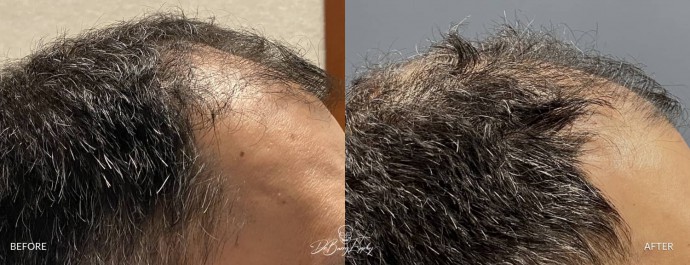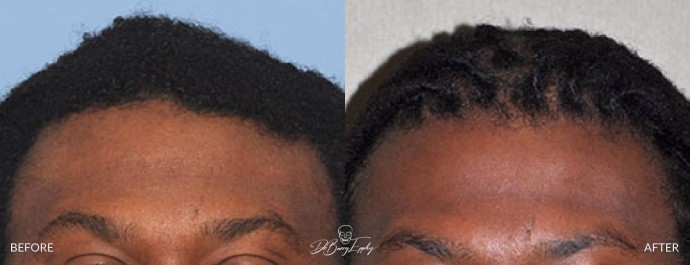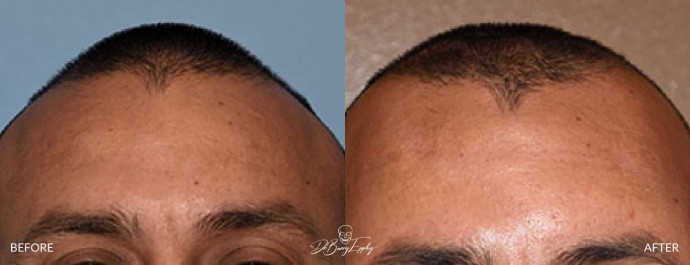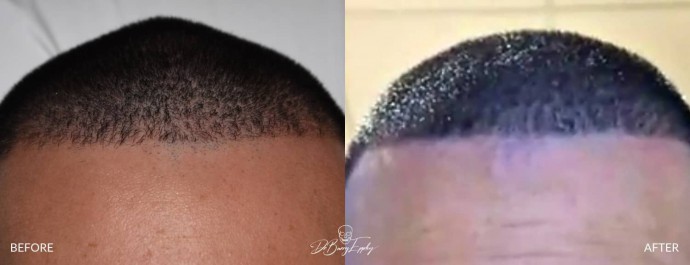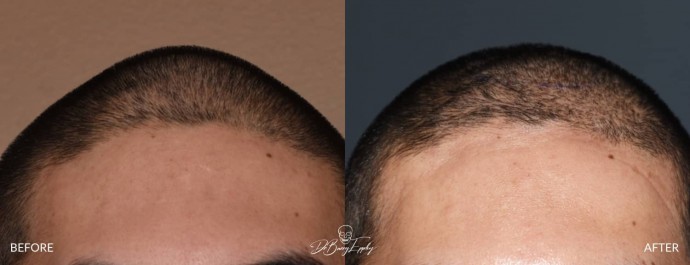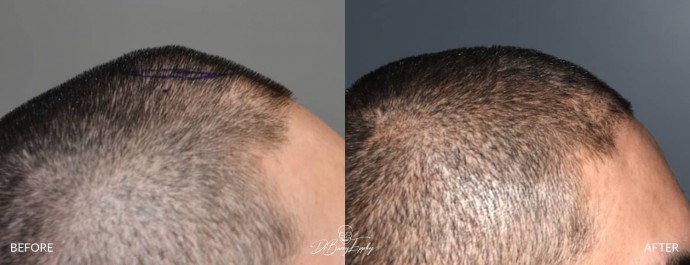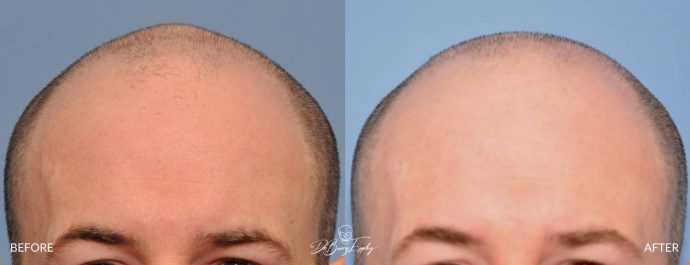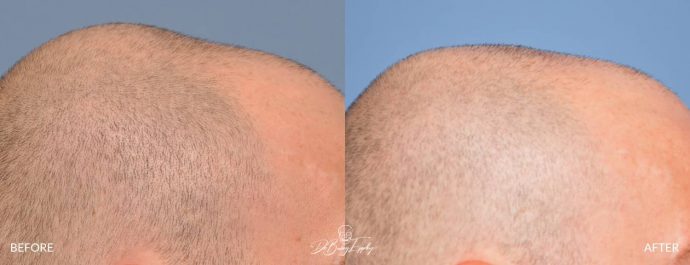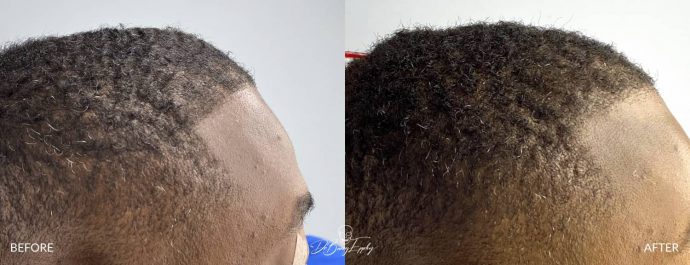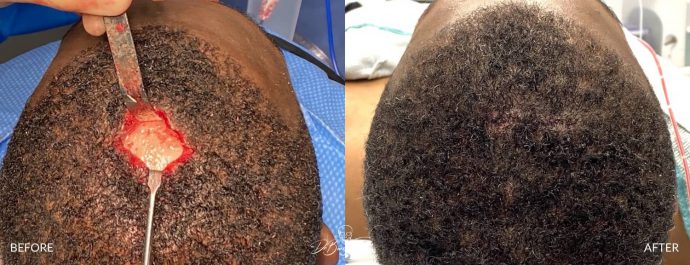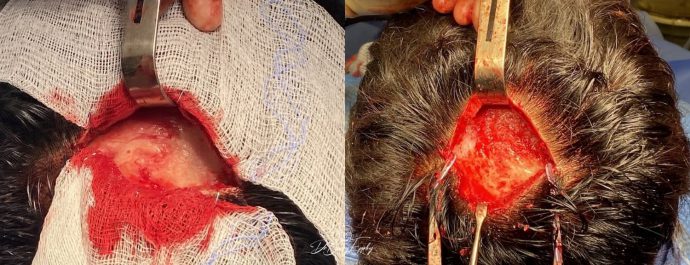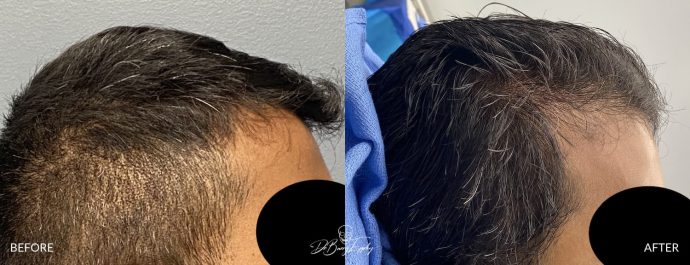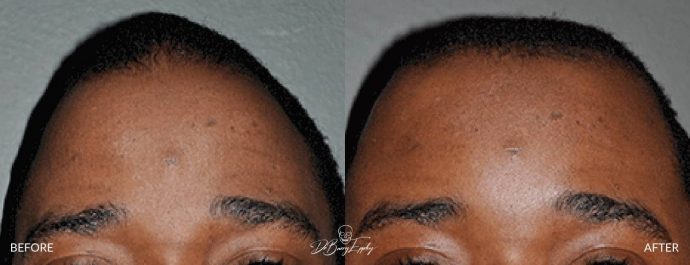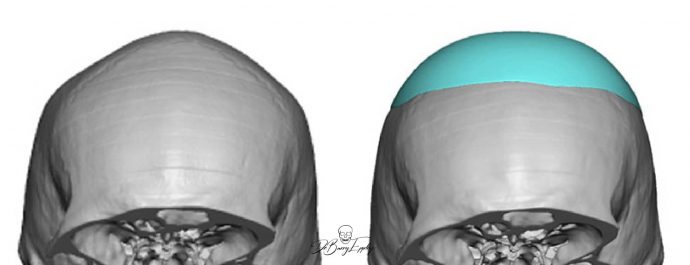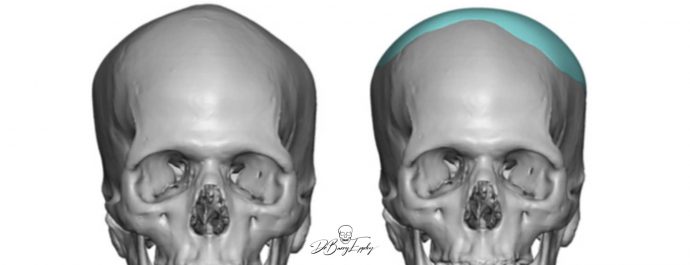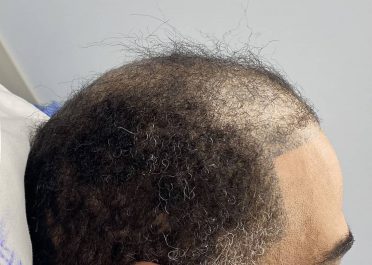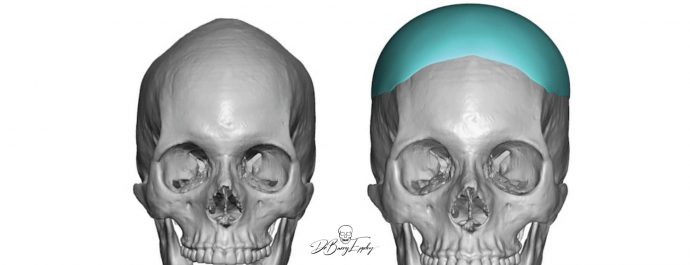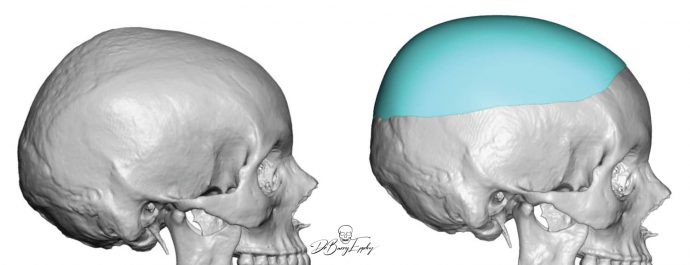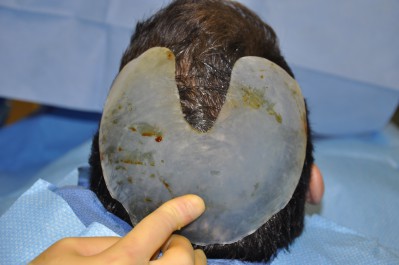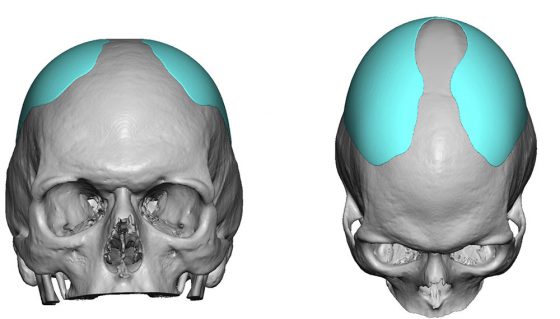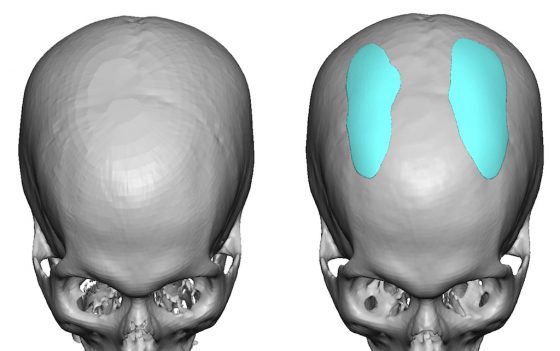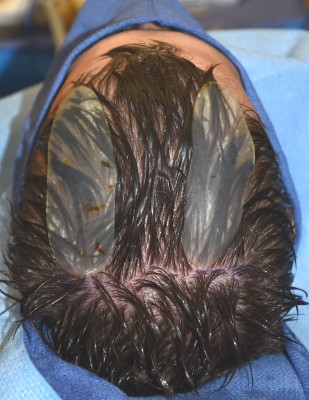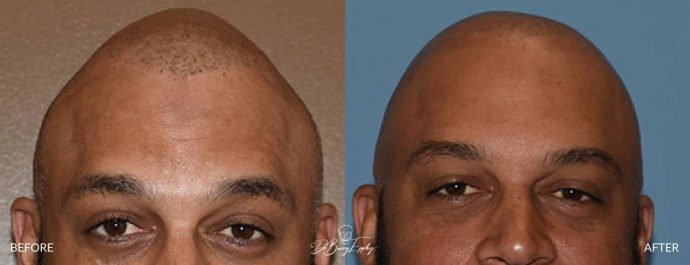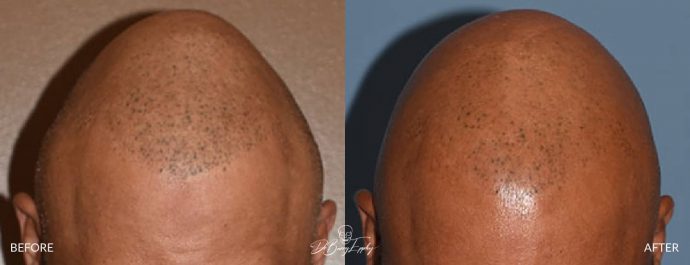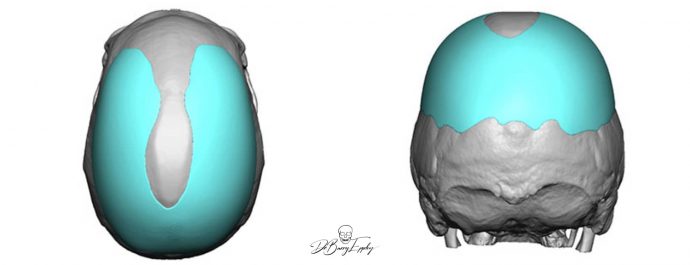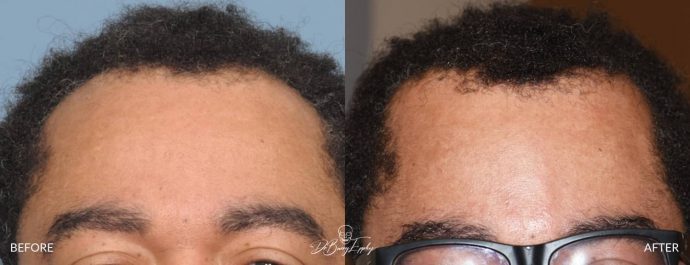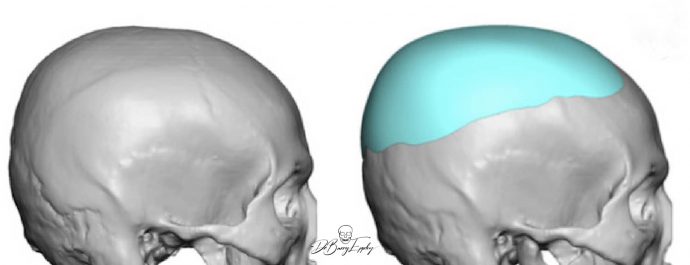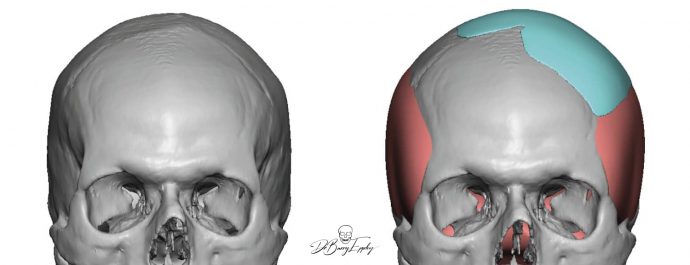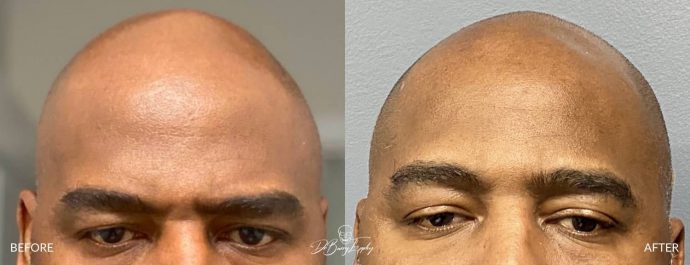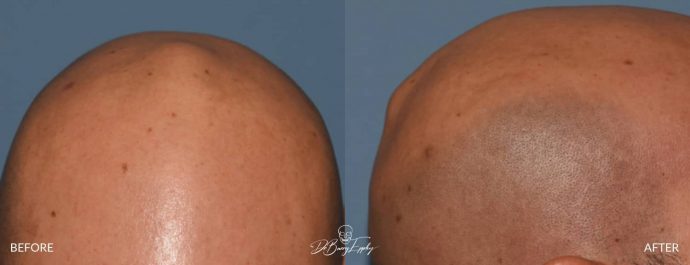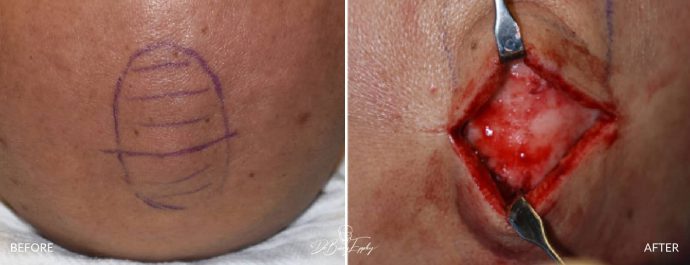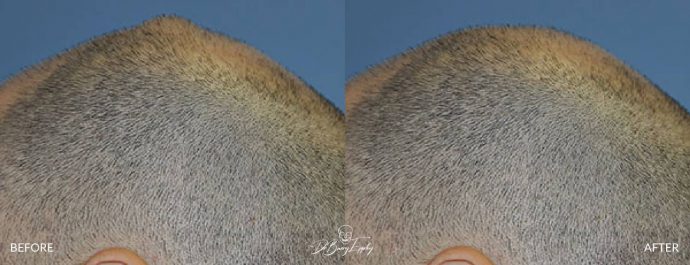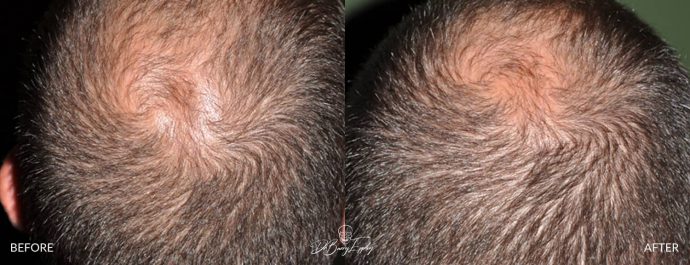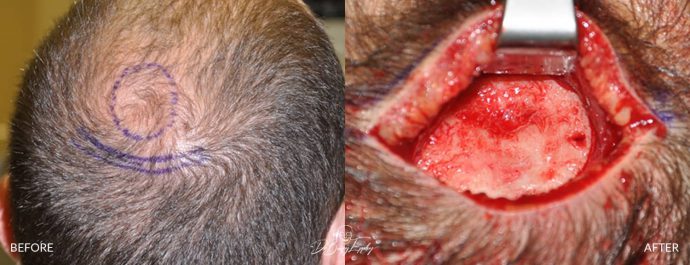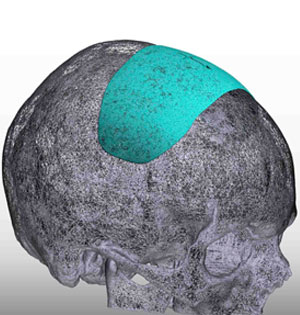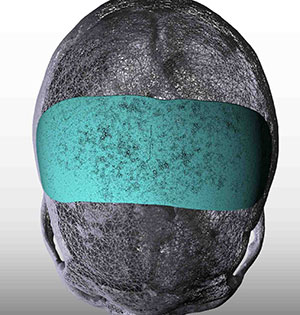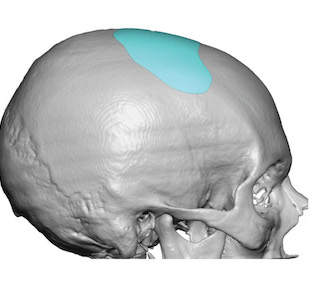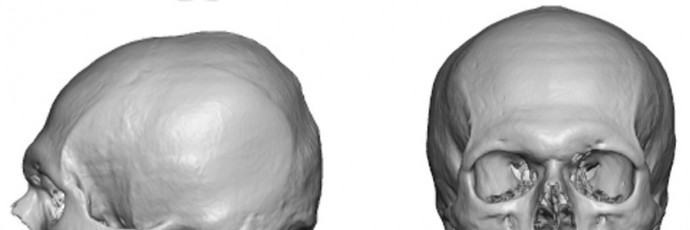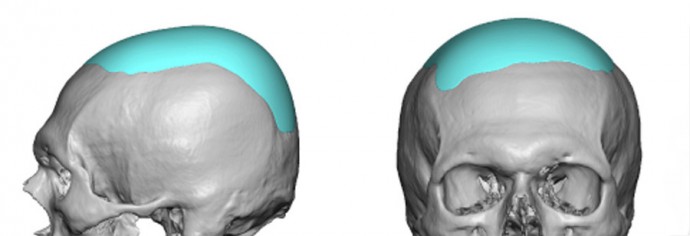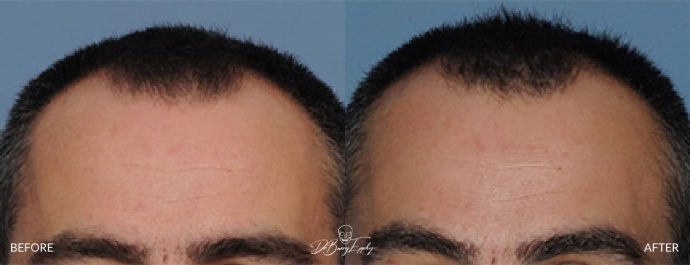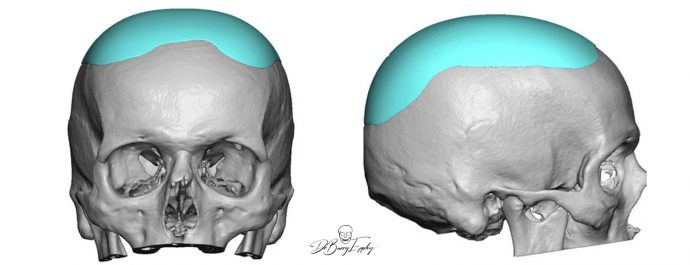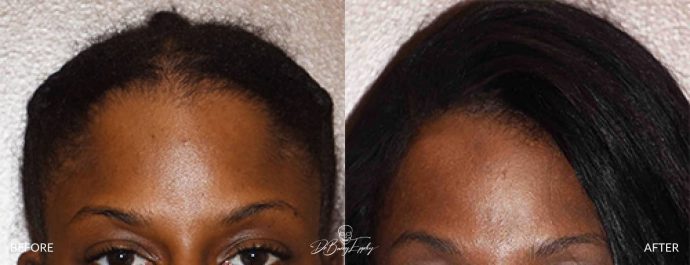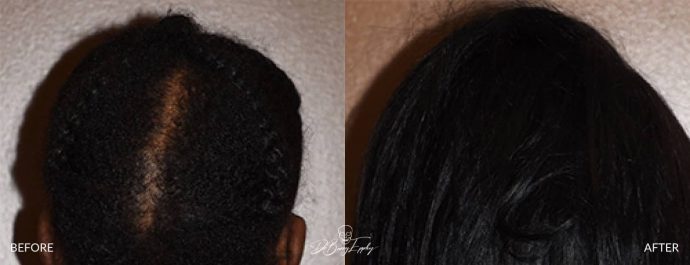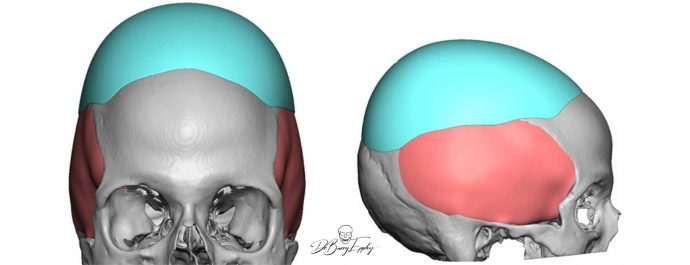Aesthetic Skull Surgery for Top of Head Shape Deformities
On this Page
Sagittal Crest Reduction
The original sagittal suture runs between the front and back soft spots on a baby and helps the skull bones around them grow to accomodate the rapidly expanding brain underneath. Premature closure of this midline skull suture on the top of the head produces the well known congenital skull deformity of sagittal craniosynostosis and the classic elongated and narrow head shape. A very minor variant or microfrom of this type of craniosynostosis is the sagittal crest deformity, This appears as a mild to moderate thickening of the original suture line that raises above the skull’s midline contour. It may be just a slight thickening, usually near the back (at the original posterior fontanelle), or it can be a distinct ridge that runs as far forward as the top of the forehead (at the original anterior fontanelle).
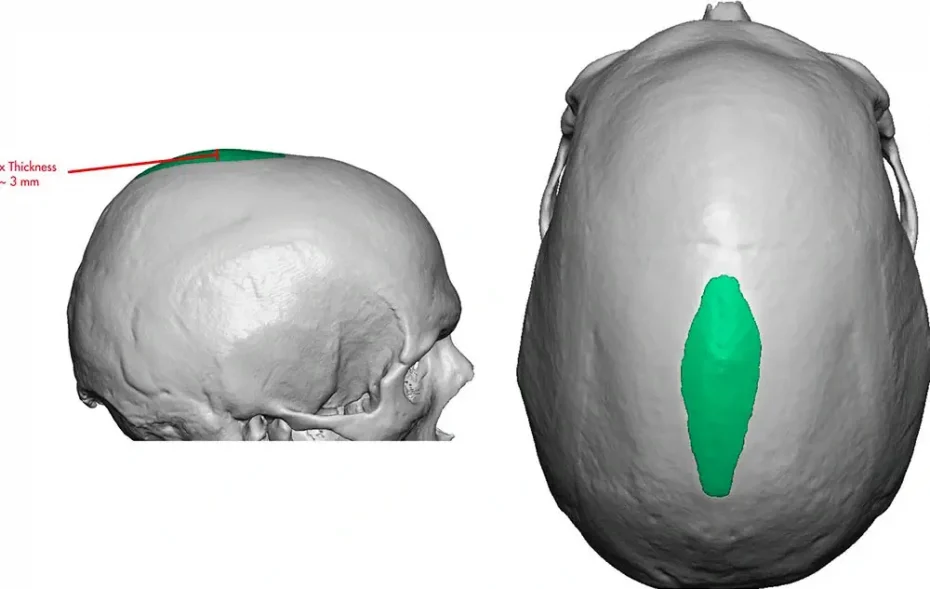
In some cases the sagittal crest is more prominent anteriorly or closer to the forehead. This can also be treated with an anterior sagittal reduction surgery.
The sagittal crest deformity with an otherwise normal skull contour around it can be reduced by bone burring through a small horizontal incision at its back end.
When the skull bump occurs more anteriorly it may be called an anterior fontanelle skull deformity if it is a circular area of bone as opposed to a linear sagittal crest. Regardless of the diagnostic name this anterior fontanelle skull bump can be reduced by a bone burring technique like any other high sagittal crest deformity.
The very middle of the sagittal suture line can be abnormally raised disrupting the more aesthetic slope of the skull has it descends from the crown area to the forehead. This raised middle third of the sagittal region can be effectively reduced through a limited scalp incision by removing the outer cortex of the skull bone layer.
The sagittal crest deformity that is more severe can make the top of the head appear very peaked with a v-shape due to surrounding (paralleling) parasagittal contour deficiencies. Bone reduction of the sagittal crest in these cases may not be sufficient to create a smooth and more natural convex shape to the top of the head. Augmentation of the parasagittal areas up to the level of the sagittal crest may be done to establish a more normal shape.
One option for correction of the more severe sagittal crest deformity is the placement of parasagittal bone cement through a more open scalp incision, paralleling the sagittal crest. Some reduction of the sagittal crest can be done concurrently for a dual sagittal reduction and parasagittal augmentation effect.
Another treatment option is the fabrication of a custom skull implant that covers the entire top of the head. It is made so that it is very thin in the midline (only thick enough to act as a connector to the sides of the implant) and has greater thickness in the parasagittal areas. Its design creates a smooth and more natural contour to the top of the head from the front and back views.
In other cases a combined approach, sagittal ridge reduction with a custom skull implant, provides a better overall head shape result. With some sagittal ridges there is also a flattening behind the ridge which wraps around and creates a posterior parasagittal deficiency as well.
In designing a custom skull implant in which the sagittal crest is to be reduced it is important that the design carries far enough over the temporal line to get a smooth convex shape to the front view of the head. Many such aesthetic skull shape deformities also have a flatter upper back of the head which needs to be incorporated into the skull implant design as well.
Parasagittal Skull Augmentation
For small parasagittal deficiencies, separate custom made silicone implants can be used for augmentation. They do not need to cross the sagittal midline and can be designed so that they go beyond the temporal line and sit on top of the temporal muscle/fascia to provide an augmentation effect more laterally.
Smaller versions of the same parasagittal skull implant concept can also be two separate small implants made and placed along the midline sagittal crest.
Major parasagittal skull deficiencies can create the Peaked or Inverted V shape skull deformity. This can be very effectively treated with a custom horsehoe-shaped skull implant design that wraps around the sides and back of the head.
In some patients the top of the head may be asymmetric due to differences in the two side of the top of the head. (parasagittal deficiency) Very commonly that deficiency will cross the bony temporal line (the outer border of the parasagittal region) to involve the upper temporal area as well. A custom skull implant can be designed to augment just this one side of the top of the head. (custom parasagittal-temporal implant)
Sagittal Bump Reduction
Closure of the neonatal posterior fontanelle (soft spot) can be associated with an excessive accumulation of bone. This is created by the fusion of the sagittal and lambdoidal sutures which for unknown reasons can create too much bone growth at this intersection. This can result in a prominent bump or posterior fontanelle knob. It can be reduced by simple bone burring through a small scalp incision directly over it.
Sagittal Dimple Correction
Conversely and more commonly, closure of the posterior fontanelle can be incomplete with a much thinner bone thickness than the surrounding skull bone. This creates an indentation or dimple as a residual remnant at the original posterior fontanelle site. The sagittal dimple can be corrected through the addition of a small amount of bone cement to raise its contour to an even level with that of the surrounding skull.
Sagittal Dip Augmentation
Unlike the raised sagittal crest deformity, the sagittal dip deformity is a midline depression that can develop between the original anterior and posterior fontanelle locations. This creates a relative linear midline depression or ‘dip’ in the contour of the top of the skull. This is most easily filled in with small hand carved silicone or Gore-tex implant that matches the length and width of the sagittal dip.
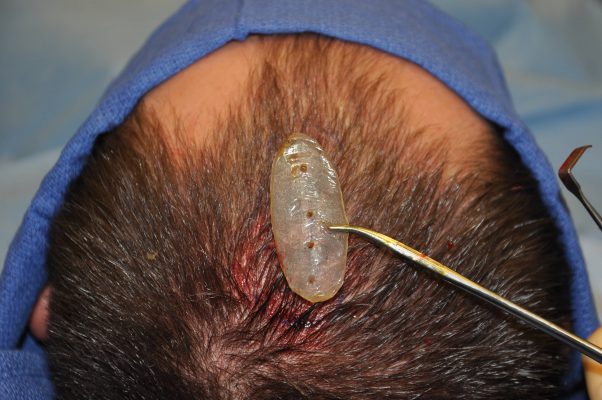
In larger depressions that cross the sagittal midline and extend to the sides of the head (known more accurately as a Coronal Dip or Depression Skull Deformity), a custom skull implant can be designed to fit in this extended transverse skull contour defect.
Flat Top of the Head
Flatness or irregularities across the top of the head create an unnatu-ral shape to the normal frontal and profile convexity of the skull. (top of the head) Complete augmentation of the top of the head can be done by a custom designed silicone skull implants made from the pa-tient’s 3D CT scan. The implant can be used to smooth the top surface of the skull or augment it for the purposes of skull or head heighten-ing.
A thin custom skull implant can be made to cover the top of the head to create a smooth external contour and cover any skull bone ior-rergularities. The implant does not have to be very thick and can have just a few millimeters of projection. The surface area that it covers is what is important to create a smooth shape. This type of augmenta-tion can be referred to as a skull cap implant or cover.
Some patients may prefer to change the overall shape of the top of their head to a more round or even more square shape. A custom skill implant can be designed to accomplish that type of frontal view head shape change.
Heightening of the top of the head can be done with the limits of the scalp’s ability to stretch. Small amounts of height can be added to make the top of the head more round.
While more significant skull heightening implant designs can be done, the consideration of how much the scalp will stretch to accommodate the implant volume is important. In some patients that require more than 10mms of overall skull height increase a first stage scalp expansion may be needed.
Locations
Carmel, IN 46032 USA
Contact Us
